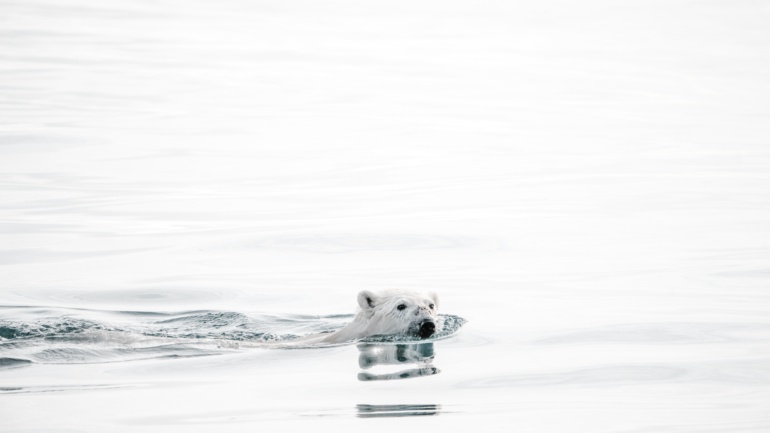By Rose Delaney, Staff Writer & Researcher for Save The Water™ | January 11, 2019
What’s WASH? Water, Sanitation, and Hygiene.
First of all, in 2015, the United Nations (UN) General Assembly put forth the UN Sustainable Development Goal 6 (SDG 6). Overall, SDG 6 calls for both the global accessibility and effective management of water and sanitation. Above all, this bill applies regardless of race, religion, or geographic location.1
According to the United Nations International Children’s Emergency Fund (UNICEF), WASH stands for “water, sanitation, and hygiene.” Certainly, the lack of equitable, secure, and common access to WASH is a core public health concern. In addition, these issues are more severe in developing countries where inequity thrives.
According to UNICEF, 2.1 billion people across the globe still lack access to clean and safe water.2 Simply put, 2.1 billion people need WASH.
Scarce Water, Sanitation, and Hygiene WASH in Low- and Middle-Income Countries Healthcare Facilities
World Health Organization (WHO) and UNICEF conducted a study. According to their study, a large number of low and middle-income countries across Africa, Asia, and Latin America need WASH. In particular, critical services are required in healthcare facilities. To be certain, the lack of critical services in healthcare facilities can leave recovery from the harms caused by unclean water all but impossible.
In fact, data gathered by UNICEF and WHO shows that from 54 countries representing 66,101 healthcare facilities, 38 percent of the facilities do not have a sufficient water source. Additionally, 19 percent do not have adequate sanitation. On top of this, 35 percent do not have access to clean water and soap for handwashing. Most noteworthy, this lack of services harms the ability of healthcare facilities to provide routine services such as child delivery, disease control, and vital immunization.3
According to these studies, among healthcare facilities in 78 low and middle-income countries, 66 percent do not have running water and soap. In addition, a third of these 129,000 healthcare facilities do not have basic sanitation services.4
Furthermore, because primary care centers are the first point of medical assistance in rural and remote locations, consequently, the lack of WASH in these centers has led to the rapid spread of preventable diseases such as cholera and Ebola. Also, limited WASH hurts the ability of health care workers to carry out proper infection prevention and control measures for their patients. Moreover, best WASH practices cannot be communicated or practiced with no access to basic hygiene services.3
Need for National Planning and Transparent Data about Water, Sanitation, and Hygiene WASH
In fact, national planning and policy-making to improve WASH has consistently fallen short in low- and middle-income countries. According to an UN-water study conducted by WHO, only 25 percent of 86 countries have a fully implemented plan or policy for drinking-water and sanitation in healthcare facilities.3 What’s more, there is a critical lack of data on WASH services across Africa and Asia. As a result, this lack of information prevents clear understanding of the ongoing WASH concerns in low- and middle-income countries, as well as the implementation of better solutions.
Psychosocial Impact of Limited Access to Water, Sanitation, and Hygiene WASH
According to the few studies on the psychosocial impact of unsanitary water on low-middle income families, water insecurity can directly lead to emotional distress, anxiety, depression, and other mental health issues. Particularly, these risks plague women and children.5 Accordingly, here are three types of stresses facing families:
- Financial stressors. Since water vendors in low- and middle-income countries charge high prices for water, families must spend a lot of money on water, resulting in distress.
- Physical stressors. For example, poor sanitation includes discomfort at public waste sites, insect bites, limited hours at public latrines as well as the discomfort and risk of unsafe latrines, resulting in feelings of shame.
- Social stressors. For example, lack of privacy and threats of sexual assault and rape during times of water collection also pose a threat. Additionally, public brawls between neighbors often occur in low- and middle-income countries over access to water.5,6,7
Overcoming Setbacks From Poor Water, Sanitation, and Hygiene WASH
However, many low- and middle-income communities have adopted new strategies to aid WASH in their area.6,7 Indeed, here are six examples of their actions:
- Forming water committees to mobilize WASH efforts
- Contributing cash or labor towards the construction of public facilities
- Cutting off water bill defaulters to encourage payments
- Reducing or cutting back water use
- Conserving and reusing water
- Organizing women to go to toilets in groups to protect their privacy and to reduce risk of assault or harassment
Undoubtedly, enhanced water security leads to better nutrition, health, and socio-economic empowerment across the developing world.
For this reason, foreign aid has prioritized equitable access to clean water. As UN Secretary General, Antonio Guterres, stated on March 22, 2018, World Water Day,“We must work to prevent the spread of disease. Improved water, sanitation and hygiene in health facilities is critical to this effort.”4
6 Ways YOU Can Accelerate Water, Sanitation, and Hygiene WASH
Basically, many international organizations, non-governmental organizations, and think tanks are dedicated to resolving the WASH crisis in developing countries. However, you can also ensure clean water and sanitation is accessible to everyone, regardless of race, religion, or geographic location. In general, here are six ways you can help:
-
- Research to keep yourself informed on the countries that need aid.
- Spread awareness of how scarce WASH services are.
- Donate to organizations like UNICEF, who respond and provide emergency relief to those most in need of WASH services.
- Learn more about what actions USAID is taking to promote clean water and sanitation, such as “the U.S. Government Global Water Strategy.”
- Advocate for clean water efforts in the United States and overseas.
- Donate to Save the Water™ so that issues like poor WASH services are researched and made public, particularly in developed continents like North America and Europe.
In sum, clean, safe water for all can be a reality for all of us through global awareness and support of water, sanitation, and hygiene (WASH).
References
-
- Ryan Cronk and Jamie Bartram. April 2018. “Environmental conditions in health care facilities in low- and middle-income countries: Coverage and inequalities.” International Journal of Hygiene and Environmental Health. https://www.sciencedirect.com/science/article/pii/S1438463917303760
- UNICEF. April 10, 2016. “Water, Sanitation and Hygiene.” UNICEF. https://www.unicef.org/wash/3942_3952.html
- WHO and Unicef. 2015. “Water, Sanitation and Hygiene in Healthcare Facilities-Status in Low and Middle-Income Countries and Way Forward.” WHO and UNICEF. https://bit.ly/2Mcecnv
- William Reilly. May 5, 2018. “Clean Water is Essential to Healthcare around the Globe.” The Hill. https://thehill.com/opinion/energy-environment/386290-clean-water-is-essential-to-health-care-around-the-globe
- Elijah Bisung and Susan J. Elliott. November 10, 2016. “Psychosocial impacts of the lack of access to water and sanitation in low- and middle-income countries: a scoping review.” J Water Health. https://iwaponline.com/jwh/article/15/1/17/28427/Psychosocial-impacts-of-the-lack-of-access-to
- Michael C. Ennis-McMillan. January 8, 2008. “Suffering from Water: Social Origins of Bodily Distress in a Mexican Community.” Medical Anthropology Quarterly.
https://anthrosource.onlinelibrary.wiley.com/doi/abs/10.1525/maq.2001.15.3.368 - Elijah Bisung and Susan J. Elliott. May 14, 2016. “’Everyone is exhausted and frustrated’: exploring psychosocial impacts of the lack of access to safe water and adequate sanitation in Usoma, Kenya.” Journal of Water, Sanitation and Hygiene for Development. https://iwaponline.com/washdev/article-abstract/6/2/205/30124/Everyone-is-exhausted-and-frustrated-exploring?redirectedFrom=fulltext
- U.S. Government. 2017. “Global Water Strategy.” U.S. Government. https://bit.ly/2KEV9zy





